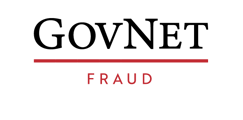Established in 2016, Quantexa specialises in leveraging big data to make informed decisions, primarily in fraud detection, corruption and money laundering. With fraud so prevalent in many organisations, including the NHS, data sharing is crucial and knowing what to do with that data is even more critical.
This is where Quantexa’s decision intelligence platform can help. Chief Evangelist at Quantexa, Imam Hoque, recently explained how the organisation analyses cases, builds models and runs them across data sets to identify unknown patterns.
Here's a summary of what he discussed.
Three Key Metrics
During his talk, Hoque explained that Quantexa identifies three key metrics to assess its fraud prevention efforts’ effectiveness.
1. Catching Fraudulent Activity
First is the ability to catch fraudulent activity and consider instances where fraudulent cases slip through the net. He explained that achieving the right balance is critical, as catching every single case would result in an overwhelming number of false positives, which takes a lot of time to investigate.
Hoque highlighted that reducing false positives through data sharing, accurate models and improved data quality will save valuable time instead.
2. Resource Allocation
The second metric focuses on efficiently allocating resources so you can maximise the impact on fraud. Focusing investigation efforts on specific regions or schemes allows you to achieve a deterrence effect. By optimising, you can address fraud effectively.
3. Speed
The third metric is the speed at which investigations are conducted. The quicker the investigations, the more impact investigators have on combatting fraud. You facilitate quicker decision-making with accurate models, a powerful user interface and leveraging more data.
How Does It Work?
Attendees heard first-hand how Quentexa works and how it can benefit them. Hoque explained that the decision intelligence platform involves resolving data discrepancies and entities to begin with. It joins several data sources and builds networks to unearth a comprehensive view of potential risks.
Breaking it down in more depth, he said: “If you join the data into networks, you get a much bigger picture. You can’t just think, ‘this company is suspicious’. You need to know the company’s directors, where they are based, who else is in the same address as them, and why there are 40 companies registered to what should be a residential address.
“So this network is a thing that exposes the risks now. In the old days, one would manually draw these using i2 charts and things like that. But, obviously, today, if you’ve got the data, systems can deal with equality and entity resolution. You automatically pump those networks out of the data and then the next step is to automatically score them to run a set of models looking for different fraud typologies.
“Whether that’s something like a procurement fraud issue or corruption issue; whether it’s a provider you know is doing too many examinations or too many processes and procedures, upcoding procedures — all this sort of stuff that might go on.
“And then, ultimately, you need to provide that into the interface of people to look at, so they’re the key components of the technology.”
The technology also extends beyond investigations. Hoque described scenarios where it applies to KYC/KYS processes, allowing you to monitor and detect suspicious activities continuously. Leveraging central data and running checks against them means potential risks can be identified earlier.
Couple this with comprehensive data analysis to prevent fraudulent activities before they escalate.
Real-Life Examples
Hoque discussed a real-life project he was involved in at the Cabinet Office, where they started with the analysis of COVID bounce-back loans and eventually expanded to support the UK PSFA system.
By incorporating data sources such as Companies House, director data index, HMRC, lender information and open-source intelligence, investigators resolved and built networks, allowing them to identify suspicious patterns and networks of fraud.
He said: “We saw typical arrangement here, where you’ve got directors setting up all sorts of companies or using off-the-shelf companies.
“Some banks spotted that the loans were fraudulent, but others had no idea.”
Hoque explained they suspected it — they just didn’t see it. But by working closely with financial institutions and regulatory bodies, Quantexta helped analyse the data to make informed decisions and combat fraud.
This example highlights the power of leveraging data to uncover complex fraud patterns and networks. Generating networks and analysing high-risk cases first means organisations can gain clear insights into the scope and scale of issues.
It will allow for measuring prevention and evaluating false positives, so you can prioritise investigations and focus your resources on where they’re needed the most.
Using Big Data in the Public Sector
Public sector organisations can lean into Quantexa being at the forefront of leveraging big data and advanced analytics. The technology will allow you to combat fraud and the innovative approach to integrating diverse data sourced, building networks and employing sophisticated models will help you detect and combat fraud and uncover complex patterns.
During his talk and demonstration, Hoque showed how Quantexa empowers organisations in the public sector to enhance fraud prevention efforts, reduce false positives and expedite investigations. By deploying technology like this, you can stay one step ahead in the ongoing battle against fraud.
Don’t Miss Out on Future Insights at Counter Fraud 2024
Counter Fraud is returning on 22nd February 2024 in London, where Imam Hoque and the Quantexa team will speak once again and will also exhibit — so visitors can ask questions directly to the team.
Designed to help you stay at the forefront of counter fraud, the topics up for discussion at the event will range from prevention tactics and risk assessment to emerging threats and local strategy.
Whether you’re from local government, central government or the NHS, expect plenty of energy and excitement surrounding the event and agenda. Tickets are on sale now, so secure your spot using the button below to be a part of this innovative and collaborative journey.
Jessica Kimbell, GovNet


